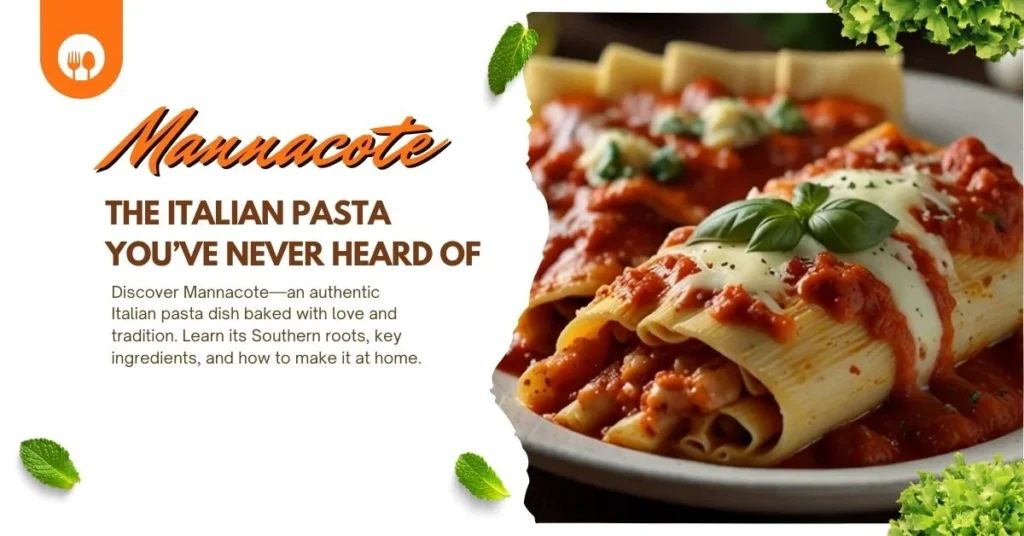
Italian cuisine is globally adored for its rich flavors, fresh ingredients, and comforting traditions. Everyone’s heard of pizza, pasta, lasagna, and risotto. But tucked away in the heart of Italy lies a lesser-known culinary delight that deserves the spotlight—Mannacote. If you’ve never heard of it before, you’re not alone. Even many Italians consider it a regional treasure.
In this article, I’ll take you on a flavorful journey into the world of Mannacote—what it is, where it comes from, how it’s made, and why it should be your next food obsession. As someone who’s traveled through Italy and had the pleasure of tasting Mannacote in a small family-run trattoria, I can tell you—it’s love at first bite.
Let’s get one thing clear: Mannacote is not a typo of “manicotti”. While the names sound similar, they are not the same dish. It’s a rustic, oven-baked Italian dish that marries the concept of pasta, cheese, and slow-cooked sauces in a completely different way. Think of it as a culinary cousin to lasagna, but with a unique identity all its own.
The texture, ingredients, and cooking method vary—but this dish offers a deeper, more soulful flavor. It’s often made during festive times like Easter or family reunions in southern Italian villages.

Mannacote originates from Southern Italy, specifically regions like Calabria and Basilicata, where grandmothers (or nonne) still cook it in wood-fired ovens. The dish was born out of necessity—using simple, seasonal ingredients to create something hearty and delicious.
Back in the day, families would use leftover meat, wild herbs, and handmade pasta sheets to build this dish. It was a way to stretch ingredients and feed many. Over time, it evolved into a special occasion dish, often made with care and patience over several hours.
The secret to a perfect Mannacote lies in fresh, wholesome ingredients. Here’s what typically goes into it:
The beauty of Mannacote is that it adapts to what’s available—every family has its own version. Some prefer it vegetarian, some pack it with three kinds of meat.

I once had the chance to cook Mannacote with a Calabrian family during my trip in 2019. It was a hands-on experience that taught me the value of slow food and family traditions. Here’s a simplified, authentic version of the recipe:
This is key! Let the dish rest for at least 15 minutes before slicing. The flavors settle, and it cuts beautifully.
Here’s why Mannacote deserves a spot in your kitchen:
In a small village near Matera, I was invited to a Sunday lunch. I didn’t speak much Italian, and the host didn’t speak English. But when they brought out a steaming pan of Mannacote, words didn’t matter. The aroma filled the room, and the first bite was pure magic—rich meat, soft pasta, melted cheese, and just the right amount of herbs.
It reminded me that food isn’t just fuel—it’s memory, tradition, and love on a plate.
Yes, although it’s not widely known globally, Mannacote is a traditional dish from Southern Italy. It’s similar to lasagna but has regional variations.
Absolutely. Just assemble the dish, freeze it before baking, and cook it directly from frozen (add extra baking time). It’s a great meal prep option.
It can be! Swap the meat ragù for a mushroom and lentil mixture or roasted vegetables.
A medium-bodied red like Chianti, Montepulciano d’Abruzzo, or Nero d’Avola complements it beautifully.
Mannacote is more than just a dish—it’s a celebration of Italian tradition, family, and flavor. Whether you’re hosting a dinner party or simply want to explore beyond the usual pasta fare, this dish is a game-changer.
There’s something magical about taking the time to prepare a dish from scratch, layering flavors, and watching it all come together in the oven. It brings that experience to life—and once you try it, you’ll want to make it again and again.
So next time someone says Italian food is all about pizza and spaghetti, you can smile and say, “Have you ever tried something more traditional?”
Note: This article is for informational and educational purposes only. Themannacote.com does not sell or serve Italian food. All mentions of recipes, ingredients, and traditions are shared to inspire and inform food lovers worldwide.
